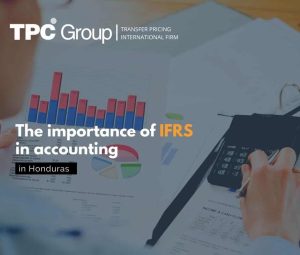What is an intangible asset?
According to International Accounting Standard No. 38 (IAS 38), an intangible asset is an asset that is non-physical but has a monetary value since it represents a potential revenue such as patents, computer software, trademarks, a copyright to a song, and a company’s brand.
Most of the aforementioned examples have the characteristic of being intellectual properties, identifiable (assets that can be separated from other assets and can even be sold by the company), and can benefit the company for more than one year. Therefore, they are long-term assets and may be listed on a balance sheet.
Only acquired assets and those with an identifiable value and useful lifespan that can be amortized can be on the company’s balance sheet.
However, not all assets meet the definition of an intangible asset because they must meet concepts of identifiability, control over the resource, and the existence of future economic benefits, unlike tangible assets.
The identifiability criterion is met when an intangible asset is separable or when it arises from legal or other contractual rights, regardless of whether those rights are transferable or separable from the entity or other rights and obligations.
The characteristic of control over the resource lies in the right of the entity to obtain future economic benefits. However, the legal enforceability of a right over an asset is not necessary to control since the entity may somehow exercise it over the economic benefits.
Future economic benefits from an intangible asset include revenue from the sale of products or services, cost savings, and other miscellaneous returns arising from the use of the asset by the entity.
Criteria for initial recognition
According to the IAS 38 criteria, an intangible asset is only recognized if:
- It is probable that future economic benefits attributed to the asset will flow to the entity.
- The cost of the asset can be measured reliably.
The standard also states that the probability criterion should be assessed using reasonable and well-founded assumptions that represent management’s best estimates considering the economic conditions during the asset’s useful life.
At the time of initial recognition, the intangible asset is measured at cost; subsequent recognitions will measure such assets at cost less accumulated amortization and accumulated impairment losses.
The cost of a separately acquired asset includes:
- The acquisition price, including import duties and non-recoverable taxes, after deducting trade discounts and rebates
- Any costs are directly attributable to preparing the asset for its intended use.
Paragraph 28 of the standard shows some examples of costs directly attributable at initial recognition:
- Employee benefits costs are derived directly from bringing the asset to its condition of use.
- Professional fees that directly arise from putting the asset into its condition of use.
- Costs of verifying that the asset is functioning properly.
The recognition of the costs in the book value of an intangible asset will end when the asset is in the place and condition necessary to operate in the manner foreseen by management.
Trademarks, newspaper or magazine headers, stamps or publishing names, customer lists, or similar items generated internally shall not be recognized as intangible assets.
Let’s see some examples and analyze if they are within the recognition criteria:
- The acquisition of a recognized brand in the market, of a product that can be marketed for 20 years. This brand meets the definition of an intangible asset according to the standard. In this case, the company will exercise control over the production and marketing of the product under the brand and has the legal right over it, meeting the identifiability and control criteria, generating future economic benefits.
- The acquisition of an urban transport line with licenses to operate 50 buses on a specific route in the city, which can be transferred to other companies. According to the definition of an intangible asset, these licenses to cover urban routes can be recognized as such due to the control the company will exercise by having the right to operate, meeting the identifiability and control criteria, and generating future economic benefits.
Islava Zulema Ruiz Quiroz Degree in Public Accounting



